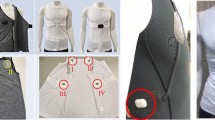Abstract
With the elderly population on the rise, assistive smart technology is positioned to help the elderly living community take on the upcoming age wave. The promise of this technology is focused on providing high-quality data to caregivers. While the research community has published many successes gathering and modeling medical data, there is little work on how to effectively deliver data to caregivers. This study attempts to inform researchers and engineers building smart technologies how to better understand the needs of nurses assisting the elderly. Interviews suggest nutrition, sleep length and quality, cleanliness of the individual, safety, and elopement by cognitively impaired individuals are of central concern. It is also important for programmers to make graphs and charts with axis have a real-world relationship. Sensor “events” are not relevant to nursing staff, and should not be presented in their raw form. Time increments are more appropriate for this population than quantity of sensor events. During the design of user-facing tools, a little extra care to the needs of caregivers can ensure assistive smart homes are helpful technologies.
Similar content being viewed by others
References
Arsand E, Demiris G (2008) User-centered methods for designing patient-centric self-help tools. Inform Health Soc Care 33(3):158–169
Brooke J (1986) System Usability Scale (SUS): A quick-and-dirty method of system evaluation user information. Digital Equipment Co. Lt., Reading, UK
Chernbumroong S, Atkins AS, Hongnian Y (2010) Perception of smart home technologies to assist elderly people. In: Proceedings of the 4th international conference on software, knowledge, information management and applications, Paro
Cleaveland WS (1985) The elements of graphing data. Wadsworth Advanced Book Program, Murray Hill
Crandall AS, Zulas AL, Cook DJ (2013) Smart home in a box: deploying large-scale in-home smart environments. Intell Buil Int (to appear)
Demiris G, Rantz MJ, Aud MA, Marek KD, Tyrer HW, Skubic M, Hussam AA (2004) Older adults’ attitudes towards and perceptions of ‘smart home’ technologies: a pilot study. Med Inform Internet 29(2):87–94
Demiris G, Hensel BK, Skubic M, Rantz M (2008) Senior residents’ perceived need of and preferences for “smart home” sensor technologies. Int J Technol Assess Health Care 24(1):120–124
Fisk AD, Rogers WA, Charness N, Czaja SJ, Sharit J (2009) Designing for older adults: principles and creative human factors approaches. CRC Press, Boca Raton
Hwang AS, Truong KN, Mihailidis A (2012) Using participatory design to determine the needs of informal caregivers for smart home user interfaces. In: Proceedings of the 6th international conference on pervasive computing technologies for healthcare and workshops, San Diego
Rantz M, Aud M, Alexander G, Oliver D, Minner D, Skubic M, Keller J, He Z, Popescu M, Demiris G, Miller S (2008) TigerPlace: an innovative educational and research environment. In: AAAI fall symposium, Washington, DC
Simpson JM (1993) Elderly people at risk of fall the role of muscle weakness. Physiotherapy 79(12):831–835
Skubic M, Alexander G, Popescu M, Rantz M, Keller J (2009) A smart home application to elder care: current status and lessons learned. Technol Health Care 12:193–201
Tufte ER (2001) The visual display of quantitative information, 2nd edn. Graphics Press LLC, Cheshire
Zulas AL, Crandall AS, Schmitter-Edgecombe M, Cook DJ (2012) Caregiver needs from elder care assistive smart homes: nursing assessment. In: Proceedings of the human factors and ergonomics society annual meeting, vol 56, issue 1, Sage, pp 125–129
Author information
Authors and Affiliations
Corresponding author
Editor information
Editors and Affiliations
Rights and permissions
Copyright information
© 2014 Springer International Publishing Switzerland (outside the USA)
About this entry
Cite this entry
Zulas, A.L., Crandall, A.S. (2014). Assessing Professional Caregiver Needs in Assistive Smart Homes. In: van Hoof, J., Demiris, G., Wouters, E. (eds) Handbook of Smart Homes, Health Care and Well-Being. Springer, Cham. https://doi.org/10.1007/978-3-319-01904-8_14-1
Download citation
DOI: https://doi.org/10.1007/978-3-319-01904-8_14-1
Received:
Accepted:
Published:
Publisher Name: Springer, Cham
Online ISBN: 978-3-319-01904-8
eBook Packages: Springer Reference EngineeringReference Module Computer Science and Engineering




